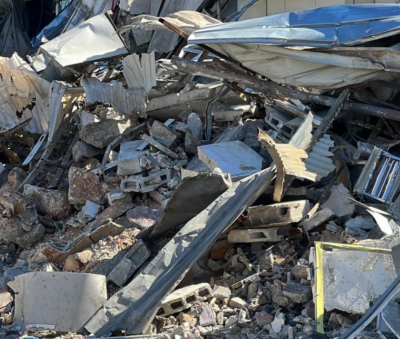The United Nations Office for the Coordination of Humanitarian Affairs in the Occupied Palestinian Territory (OCHA) reports that over 40,000 Jerusalem residents have been affected by demolitions executed by Israeli authorities in occupied Jerusalem since October 7, 2023.
Data from OCHA reveals that Israeli authorities have demolished 226 homes and structures in Jerusalem, resulting in the displacement of 621 Palestinians and impacting 40,767 others.
Among the demolished structures were 125 inhabited homes, 28 uninhabited residential units, 39 structures that provided livelihoods, and 34 agricultural facilities. Most of the demolitions were justified by Israeli authorities under the pretext of building without permits, accounting for 218 structures.
The demolitions occurred in 24 towns and neighborhoods in Jerusalem, with the highest concentration in Jabal al-Mukaber, where 37 homes and structures, including 21 inhabited homes, were demolished.
This was followed by Silwan, south of the Al-Aqsa Mosque, with 31 structures, including 21 inhabited homes. Other affected areas include Al-Walaja, Beit Hanina, Isawiya, and various neighborhoods in Jerusalem.
The statistics do not include towns in the Jerusalem governorate such as Anata and Hizma, which also experienced demolitions and are classified in Area C.
Since 1967, Israeli authorities have pursued efforts to consolidate control over Jerusalem through unilateral actions that violate international law.
These actions aim to alter Jerusalem’s demographic, religious, and historical landscape, they include land and home seizures for colonization, building restrictions, and home demolitions.
In addition to restricting Palestinian urban expansion through land seizures and colony construction, Israeli authorities have implemented planning policies to prevent Jerusalemites from building on their land or expanding existing structures.
Consequently, Israeli authorities allow Palestinians to build and live on only 13% of the area of occupied East Jerusalem. Building permits in this area are very expensive and nearly impossible to obtain due to restrictive Israeli policies and discriminatory procedures.
When permits are granted, they are approved for less than 2% of applications, forcing Palestinians to build without permits to accommodate their families’ growth. This lack of permits is then used by Israeli authorities as a pretext for demolitions or forcing Palestinians to demolish their homes.
In a related context, OCHA data indicated that Israeli occupation forces demolished 988 homes and structures in Area C (60% of the occupied West Bank) during the same period, displacing 934 citizens and affecting 44,072 others. The demolitions were concentrated in cities and towns such as Jericho, Anata, Tulkarem, Douma, Hizma, and Ethna.
In Areas A and B, Israeli forces demolished 590 homes and structures, displacing 2,953 citizens and affecting 446,833 others. The demolitions were concentrated in the Tulkarem, Nur Shams, and Jenin refugee camps, and the city of Jenin, which experienced several ground invasions by Israeli forces, resulting in widespread destruction of infrastructure and private and public facilities since October 7, 2023.
Area A: Under ‘the control’ of the Palestinian Authority (PA) and includes major Palestinian cities like Hebron, Ramallah, Bethlehem, and Nablus. It makes up about 18% of the West Bank.
Area B: Here, the PA manages civil affairs, but Israel retains security control. This area covers about 22% of the West Bank.
Area C: This is the largest section, comprising about 60% of the West Bank. It is under full Israeli control.
Read more: Ten maps to understand the occupied West Bank – Al-Jazeera English

